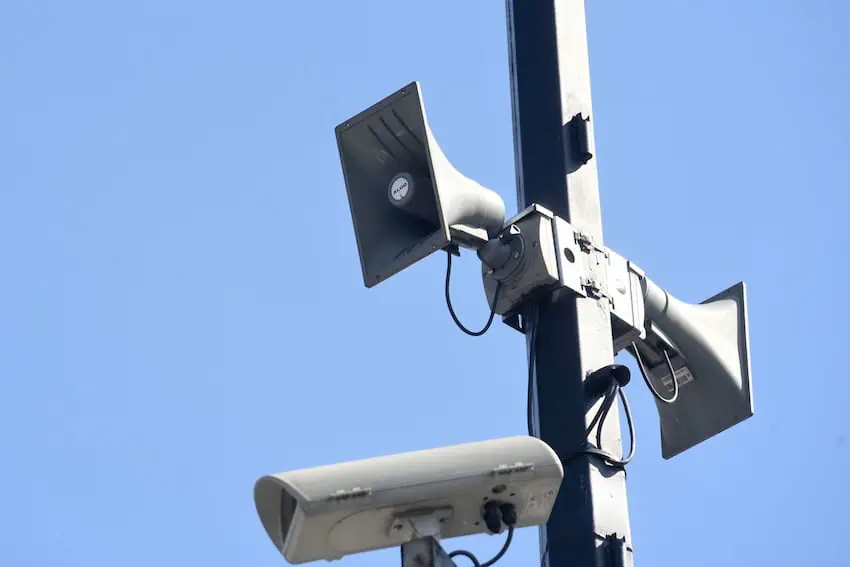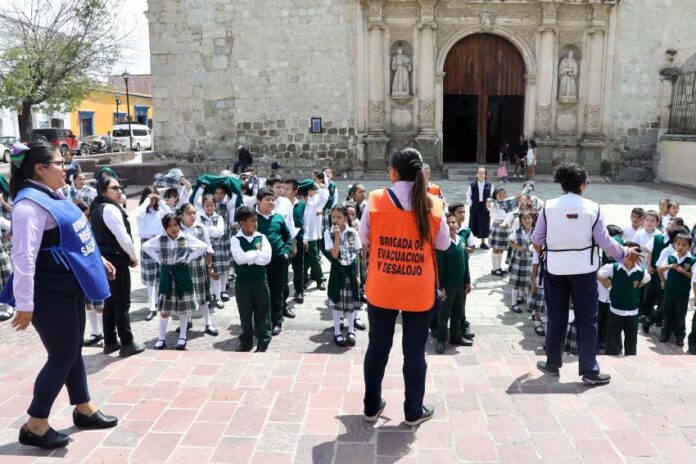Mexico will conduct one of two annual earthquake alert drills on Tuesday morning to test its emergency response capabilities in central and southwestern Mexico. Authorities are encouraging everybody to participate.
Alarms and wireless emergency alerts are set to activate at 11:30 a.m. Tuesday. The drill will be based on a hypothetical 8.1 magnitude earthquake centered just offshore in the Gulf of Tehuantepec.

President Claudia Sheinbaum called the drill “one of the most relevant prevention and civil protection exercises” that Mexico will stage this year.
Emergency personnel and security agents will conduct inspections in their respective operational areas.
At the same time, Navy personnel will be conducting a tsunami response exercise along the Pacific coast.
Laura Velázquez Alzúa, the coordinator of Mexico’s National Civil Protection Agency, said the year’s first emergency drill “not only promotes a culture of prevention but also allows us to evaluate emergency protocols and inter-institutional coordination.”
Tuesday’s drill will activate the nation’s earthquake alert infrastructure, which features nearly 15,000 speakers dispersed across 10 states (México state, Guerrero, Morelos, Puebla, Jalisco, Colima, Michoacán, Oaxaca, Tlaxcala and Chiapas) and Mexico City. Alert messages will also sound on the radio, television and, in the Mexico City metropolitan area, on cellphones.
This will be the second time the cellphone alert system will be tested, and its effectiveness would represent a significant advance in early alert technology. Chile is the only country in the Americas with a centralized national alert system.
Mexico’s Digital Transformation and Telecommunications Agency has conducted 10 silent tests of cellphone alert technology with the cooperation of telecom companies Telefónica, Telcel and AT&T. The system is expected to send written messages accompanied by an alarm to five million cellphones. On Tuesday, the message will say, “This is a drill.”
Also on Tuesday, the National Emergency Commission (CNE) will convene with the virtual participation of all 31 governors and the Mexico City mayor. The CNE will conduct an analysis of the exercise and publish a performance review afterward.
🤳🏻🚨 ¡Recibe la alerta de simulacro en tu cel!
Este 29 de abril, a las 11:30 horas, se llevará a cabo el Primer Simulacro Nacional 2025. Asegúrate de que tu celular reciba la alerta en tiempo y forma. 😉 ¡Si eres de la CDMX, aquí te contamos cómo tener activo este sistema de… pic.twitter.com/tcFVwLO0MF
— ISSSTE (@ISSSTE_mx) April 27, 2025
Instructions will be communicated to passengers using public transportation when the alarm sounds. Metro users in Mexico City can expect trains to come to a halt for three minutes during the drill.
The most recent earthquake drill in Mexico was held on September 19, 2024, the anniversary of both the 1985 and 2017 earthquakes in central Mexico.
Authorities have provided reminders about the importance of listening to public messages and heeding the instructions of emergency personnel. Among their recommendations is to use these drills to identify safe places, escape routes and prepare an emergency “go bag,” including nonperishable food, water bottles, first aid, a flashlight and important personal documents.
With reports from El Universal, Infobae and El Economista
